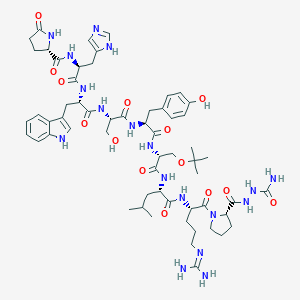Localised prostate cancer, Locally advanced prostate cancer
Adult: As an alternative to surgical castration (in locally advanced cases), adjuvant treatment to radical prostatectomy or radiotherapy, or neoadjuvant treatment prior to radiotherapy in high-risk patients: 3.6 mg every 28 days or 10.8 mg every 12 weeks. Doses to be injected into the anterior abdominal wall.
Subcutaneous
Metastatic prostate cancer
Adult: As palliative treatment in patients suitable for hormonal manipulation: 3.6 mg every 28 days or 10.8 mg every 12 weeks. Doses to be injected into the anterior abdominal wall.
Subcutaneous
Advanced breast cancer in pre- and perimenopausal women
Adult: In patients suitable for hormonal manipulation: 3.6 mg every 28 days, to be injected into the anterior abdominal wall.
Subcutaneous
Estrogen receptor positive early breast cancer in pre- and perimenopausal women
Adult: As an alternative to chemotherapy in standard care: 3.6 mg every 28 days, to be injected into the anterior abdominal wall.
Subcutaneous
Endometrial thinning
Adult: 3.6 mg as a single dose to be injected into the anterior abdominal wall 4 weeks before surgery. Alternatively, 3.6 mg for 2 doses given 4 weeks apart, followed by surgery within 2-4 weeks after the administration of the 2nd dose.
Subcutaneous
Endometriosis
Adult: 3.6 mg every 28 days, to be injected into the anterior abdominal wall. Max treatment duration: 6 months.
Subcutaneous
Pituitary desensitisation for assisted reproduction in infertility
Adult: In preparation for superovulation: 3.6 mg to be injected into the anterior abdominal wall. Monitor serum estradiol levels until they decline to levels similar to those in early follicular phase (approx 150 pmol/L) which usually takes 7-21 days.
Subcutaneous
Uterine fibroids
Adult: In combination with Fe therapy in anaemic patients: 3.6 mg every 28 days, to be injected into the anterior abdominal wall, for up to 3 months before surgery.




 Sign Out
Sign Out




